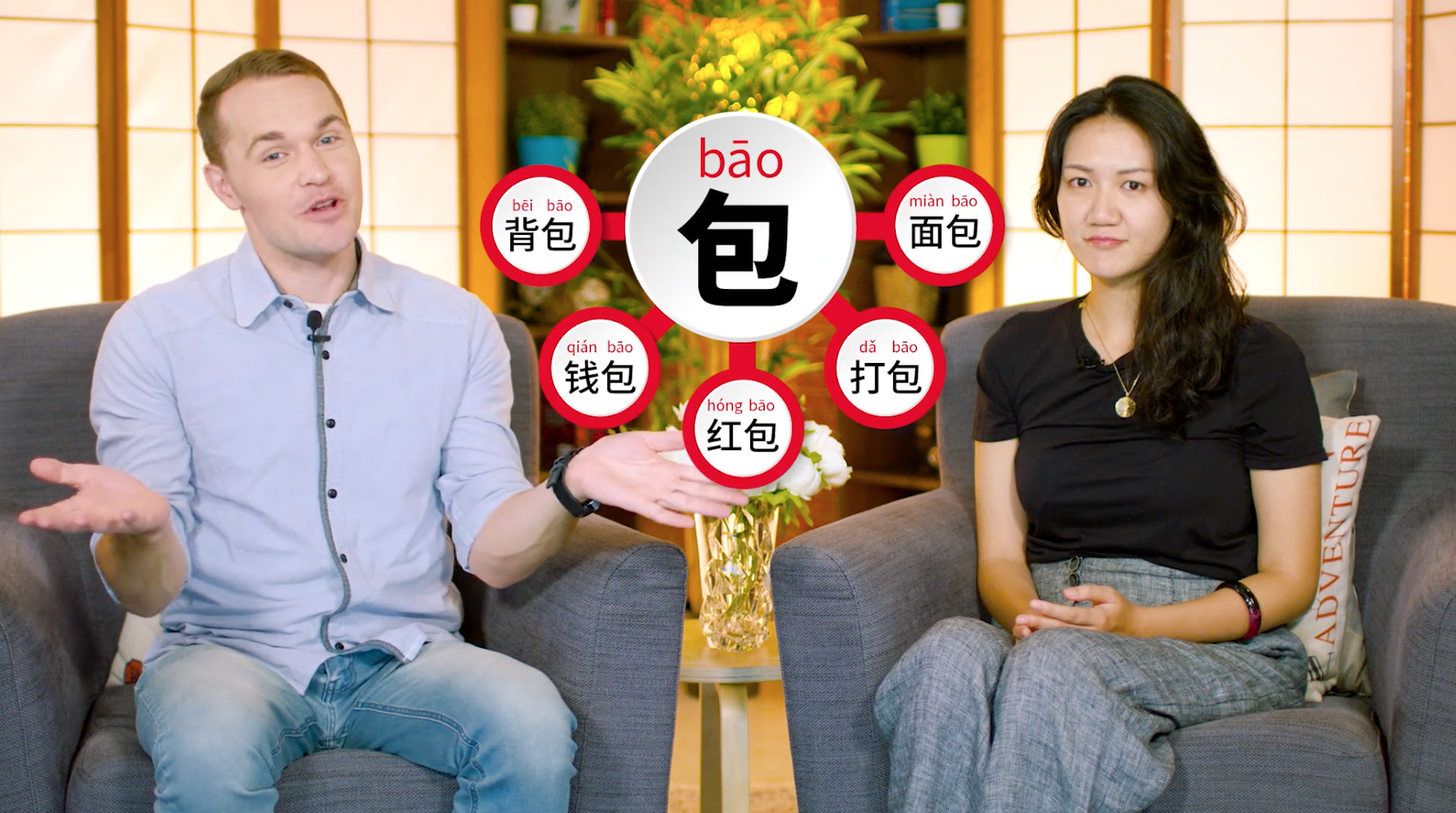Relevant Content
We'll always make sure you know exactly what the lesson is about. You
will easily understand whether it is relevant for you.
Traditional Residences
Great Hosts
Here at ChinesePod, all our lessons are presented in an entertaining
manner by our great hosts. You'll find language learners, teachers,
and even professors sharing their insights, ideas, and teaching
methods in our video and audio lessons.
Brief Lesson Summaries
A brief introduction of the lesson will always tell you what this
lesson is about and what language level is the intended target. If
you're interested in the subject, but might not be able to understand
it in full, fear not; we have transcripts of lesson dialogues
vocabulary so you can follow along.
IN THIS LESSON
ID: 0199 Upper Intermediate
In the north, you’ll find yourself in a maze of “hutongs.” In Shanghai it’s the “longtang.” In this podcast, we’ll open the regional door and lead you through the ChinesePod courtyard in a tale of two city abodes. You will learn about the styles of housing and streets in old China, and how to talk about them using Mandarin Chinese
Wed Aug 02 2006 | Jenny, John
Awesome Materials
Our lessons contain natural communication in Chinese
in video and audio format. We have have lessons focused on video or a
podcast format and our lessons have transcripts of Lesson Dialogues,
Important Vocabulary, Expanded Materials for a deep dive into the
lesson topic and Exercises focused on testing your retention.
Detailed Vocabulary
Each lesson has it's unique vocabulary and will provide you with
definitions and recordings so you can practice the pronunciation. You
will also be able to grasp the core material of a lesson at a glance.
Here we're showing you the Simplified Chinese version.
| SIMPLIFIED | PINYIN | ENGLISH | |
|---|---|---|---|
| 有味道 | yǒuwèidào | to have flavor | |
| 穿行 | chuānxíng | to go through | |
| 胡同 | hútòng | hutong (alley) | |
| 四合院 | sìhéyuàn | siheyuan (courtyard) |
老北京真有味道。骑着自行车,穿行在胡同和四合院间,特别能体会到北京的历史和人们的生活。
lǎo Běijīng zhēn yǒuwèidào 。 qí zhe zìxíngchē , chuānxíng zài hútòng hé sìhéyuàn jiān , tèbié néng tǐhuìdào Běijīng de lìshǐ hé rénmen de shēnghuó 。
Old Beijing has such an alluring charm. You can really feel the city's history and how people live as you cycle through the hutong and siheyuan.
是啊。每个城市都有自己的特色民居。它就像城市的脸。你知道吗上海也有类似四合院的建筑,叫石库门。胡同在上海叫弄堂。像北京的建筑一样,别有韵味。
shì ā 。 měige chéngshì dōu yǒu tèsè mínjū 。 tā jiùxiàng chéngshì de liǎn 。 nǐ zhīdao ma Shànghǎi yě yǒu lèisì sìhéyuàn de jiànzhù , jiào shíkùmén 。 hútòng zài Shànghǎi jiào lòngtáng 。 xiàng Běijīng de jiànzhù yíyàng , bié yǒu yùnwèi 。
That’s true. Every city has its own distinct style of residence, which is like the face of the city. Do you know that Shanghai has its own version of the siheyuan, called shikumen. The hutong is known as a longtang there. They have their own unique beauty just like their counterparts in Beijing.
嗯,我见过。和你有一样的感觉。不过四合院的起源比石库门早很多。我看书上说,四合院元朝就有了。它之所以叫四合院,是因为房屋是由东西南北四面包围,呈口字形,中间是花园。大片的四合院中间的通道叫胡同。唉,你知道石库门的起源吗?
ng4 , wǒ jiàn guo 。 hé nǐ yǒu yíyàng de gǎnjué 。 bùguò sìhéyuàn de qǐyuán bǐ shíkùmén zǎo hěn duō 。 wǒ kàn shūshàng shuō , sìhéyuàn Yuáncháo jiù yǒu le 。 tā zhīsuǒyǐ jiào sìhéyuàn , shì yīnwèi fángwū shì yóu dōngxīnánběi sìmiàn bāowéi , chéng kǒu zì xíng , zhōngjiān shì huāyuán 。 dàpiàn de sìhéyuàn zhōngjiàn de tōngdào jiào hútòng 。 āi , nǐ zhīdao shíkùmén de qǐyuán ma ?
Yes, I’ve seen those. I agree with you. Siheyuan have a much older origin than shikumen. According to a book that I read, they date back to the Yuan Dynasty. They got their name because the rooms are surrounded on four sides by walls, forming a square shape. The garden is in the center. The lanes running through blocks of siheyuan are called hutong. Do you know the origin of shikumen?
嗯,我去上海的时候听过。石库门出现于十九世纪中。当时大批难民因为打仗逃难到上海租界里,必须很多人挤在一所小房子里。久而久之,就形成了石库门这种两层楼的石质房屋。家门里面有一个很小的花园,叫天井。石库门中间细长的街道叫弄堂。以前,北京和上海的大多数居民都住在这些传统民居里。
ng4 , wǒ qù Shànghǎi de shíhou tīng guo 。 shíkùmén chūxiàn yú shíjiǔ shìjì zhōng 。 dāngshí dàpī nànmín yīnwèi dǎzhàng táonàn dào Shànghǎi zūjiè lǐ , bìxū hěn duō rén jǐ zài yī suǒ xiǎo fángzǐ lǐ 。 , jiù xíngchéng le shíkùmén zhèzhǒng liǎng céng lóu de shízhì fángwū 。 jiāmén lǐmiàn yǒu yī ge hěn xiǎo de huāyuán , jiào tiānjǐng 。 shíkùmén zhōngjiān xìcháng de jiēdào jiào lòngtáng 。 yǐqián , Běijīng hé Shànghǎi de dàduōshù jūmín dōu zhùzài zhèxiē chuántǒng mínjū lǐ 。
Yes, I heard about it when I was in Shanghai. Shikumen came into existence in the mid-19th century. There was an influx of war refugees fleeing to the concessions in Shanghai. They had to cram into small houses. Over time, these evolved into a type of two-story house made from stone known as shikumen. There is a tiny garden inside the house called a tianjing. The long narrow lanes between shikumen houses are known as longtang. Most of the people in Beijing and Shanghai used to live in these traditional residences.
Natural Dialogues
Each lesson is centered around a natural dialogue with key vocabulary
directly prepared and translated for your use. You can also
listen to each sentence as an individual recording to
improve your listening and comprehension skills.
Try It For Free
ChinesePod is 100% Free to Try. Create an account
today and get started!
Sign Up
Please enter a valid email.
- or -
Sign up with

